SPOILERS ARE PAINLESS…AND YOU CAN TAKE OR LEAVE THEM IF YOU PLEASE
I think this latest episode just gave me whiplash! After two of the last three STRANGE NEW WORLDS episodes being lighthearted comedies, and the one in between (“Lost in Translation”) having comedic moments like Uhura slugging Jim Kirk and Number One and Pelia playing Felix Unger and Oscar Madison, I really wasn’t expecting the Spanish Inquisition. (No one ever does, y’know.)
But seriously, the eighth episode of season two, “Under the Cloak of War,” was damn serious…deadly serious, in fact! There was almost no comedy relief at all…nor should there have been. War is hell. That said, television has certainly featured its fair share of sitcoms set during wartime—including McHale’s Navy, Gomer Pyle: USMC, Hogan’s Heroes, and of course, M*A*S*H. Indeed, this latest episode featured flashbacks to the Starfleet equivalent of a mobile army surgical hospital that evoked thoughts of the long-running, multiple Emmy-winning CBS series set during the Korean War. But with the exception of actor CLINT HOWARD’s character of Commander Buck Martinez, there was nothing even remotely funny about this episode.
Oh, quick interruption for trivia! I am pretty sure that Clint Howard (younger brother of Emmy and Academy Award winning actor/director RON HOWARD) is now the only actor to appear visually in both TOS and one of the CBS Studios-produced new-era Star Trek series. WALTER KOENIG did a voice-over for the series finale of STAR TREK: PICARD as a descendent of Pavel Chekov, and the voices of late TOS actorsLEONARD NIMOY, NICHELLE NICHOLS, and JAMES DOOHAN were used for the “Kobayashi” episode of PRODIGY. But in terms of being seen and heard, Clint Howard holds the sole distinction. Clint, of course, played the “real” Balok in “The Corbomite Maneuver” at the age of seven. And this isn’t his only role in new-era Trek. Clint played a creepy Orion in the first season DISCOVERY episode “Will You Take My Hand?” He was also Grady in the DS9 episode “Past Tense, Part II” and the Ferengi Muk in the first season Enterprise episode “Acquisition.” The man gets around!
Okay, back to SNW and how I felt about the episode, and, well, it’s complicated…
On a very surface level, I enjoyed “Under the Cloak of War” as a finely-crafted and deftly-produced piece of television. It was very well-acted, tightly written and edited (the second shortest episode of the season), looked fantastic (as usual, but it’s really challenging for a “quiet” sci-fi show like this to make the viewer think they’re in a middle of a chaotic war), had great make-up, costumes, lighting, VFX, music…the whole magilla. Indeed, it was another truly strong, impactful, character-driven, and enjoyable episode in a season that has, in my opinion, gone 8-and-0.
On the other hand, I was quite troubled by what I saw, and not only because of the horrific Klingon War flashbacks. Let’s dive in, shall we…?
BOLDLY GOING WHERE STAR TREK: DISCOVERY DIDN’T GO…
When Star Trek: Discovery premiered in 2017, it bought with it a very intriguing concept. The series would begin with a major interstellar war breaking out between the United Federation of Planets and the Klingon Empire (started single-handedly by main character Michael Burnham). While Star Trek had already featured war during the final four seasons of DS9, fans were curious to see what this new streaming series who do starting out being set during a full-scale war.
As it turned out, almost nothing.
Indeed, throughout most of the first season of Discovery, a viewer would hardly know there even was a war, with two episodes featuring Harry Mudd, another fighting giant tardigrades, two more episodes experimenting on and torturing said giant tardigrades, and even four full episodes with the crew displaced into the Mirror Universe. War? What war? Even the two-part season finale—which finally wrapped up the war part—showed little actual fighting/horror of war.
Granted, I wasn’t exactly embracing the idea of yet another sci-fi series being driven by war stories, especially one named “Star Trek: DISCOVERY,” but I was willing to see where they went with it. Heck, maybe it would make for some very powerful storytelling. But as episode after episode passed by with barely a phaser fired, I began wondering if 1) this was some kind of bait-and-switch, or 2) the creators of the series simply had no idea what to do with a full-scale space war. In the end, the Klingon War became a huge fizzle and disappointment.
But now Strange New Worlds may be correcting for that oversight, at least slightly. While the Klingon War is over by the time this new series kicked off, it’s only been a few years at most. And while Pike and the Enterprise were “sent away” during the war (so that, if the Federation lost, at least one ship with the best of Starfleet would survive), not everyone on Pike’s current crew went on that previous “sent away” mission. Obviously, the youngest on board, like Uhura, likely joined Starfleet toward the very end of the war and never saw action. But others, like Ortegas, M’Benga, and Chapel, definitely saw some fighting.
Indeed, we were clued in on M’Benga’s and Chapel’s military history in season two’s first episode, “The Broken Circle,” when they infiltrate the Klingons’ faux Starfleet vessel. And in last week’s “Those Old Scientists,” we learn that Ortegas is a “war hero.” So there’s three.
But now in this episode, not only do we get to see how the war has affected the crew in the present, we also get flashbacks to M’Benga’s and Chapel’s actual war experience, FINALLY giving fans a glimpse into this major war that Discovery almost completely avoided showing us!

This episode also “corrected” what was a total blunder from Discovery‘s first season: bald Klingons (with four nostrils)! It was such a bad decision that even Discovery itself tried to correct it in season two by giving the Klingons hair (and eventually removing the ridiculous extra two nostrils). And their explanation…at least for the hair: um, Klingons shave their heads when they go to war. Yeah, that’s the ticket!
Of course, when we see the Klingons fighting a war in the second half of the run of DS9, they are quite hairy. But hey, times change, and maybe the tradition went away as Klingons realized that hair-pulling was no longer being practiced by their enemies (or something similarly preposterous). Anyway, while the shaved-during-war explanation worked on a go-forward basis, SNW was showing a flashback to the actual war. But rather than showing weird-looking bald Klingons, the creators of the new series decided to just ignore the Discovery season one blunder and show hairy Klingons. And I, for one, was totally okay with that. Being reminded of those atrocious bald Klingons would have all but ruined those flashback scenes at the end where M’Benga sneaks into the Klingon stronghold and kills three of their leaders.
Granted, the real reason for including the hair in the final flashback sequence wasn’t simply to “put right what what went wrong” or stick a middle finger in the direction of their predecessor series. No, the SNW creators simply didn’t want to confuse the fans. General Dak’Rah had hair in the present, so he needed to be quickly recognizable in the flashback as the same person. And when you’ve got one Klingon with hair, the others need to be consistent or else they’ll stand out too much and be distracting. Viewers would wonder, “Wait, why are the other Klingons bald?” instead of paying attention to the fact that M’Benga is killing them.
But whatever the reason, I am a happy Trekkie…viva los hairy Klingons!
ECHOS OF STAR TREK PAST
Most of the SNW episodes this season have been somewhat evocative of episodes from past eras of Star Trek. I don’t mean copies or redos of what’s come before, but simply episodes that contain elements from or themes similar to previous and well-known episodes of TOS, TNG, and even DS9. For example, “Ad Astra per Aspera” had a very “Court-Martial“(TOS) feel to it. “Tomorrow and Tomorrow and Tomorrow” reminded many fans of TOS’s “The City on the Edge of Forever.” Aspects of “The Lotus Eaters” felt like TOS episodes “The Paradise Syndrome” and “The Cloud Minders.” And “Lost in Translation” bore a strong resemblance to certain elements of the TNG episode “Night Terrors.“
“Under the Cloak of War” evoked a number of classic episodes from various series. Most obviously, the war flashback scenes called to mind DS9‘s “Nor the Battle to the Strong” and “The Siege of AR-558,” both of them notable horrors-of-war stories with wounded soldiers and lots of fighting and medics patching up the injured.
A layer underneath that was a whiff of TOS’s “The Conscience of the King,” where the leader of a troop of actors comes aboard the Enterprise, and Kirk suspects it to be Kodos the Executioner, an infamous planetary governor who chose to kill off half of the population of colonists during an unexpected famine so that the other half could live.
Much like General/Ambassador Dak’Rah in this episode, Kodos (now known as Karidian) is a man running away from his past. Unlike the latter, however, Dak’Rah is not hiding…although he is hiding a secret. Neither man has ever been forced to atone for his past crimes, and neither has been absolved. But for Dak’Rah, Starfleet is choosing to look the other way (more on that later) whereas Karidian is a fugitive from justice and retribution. Interestingly, though, while Kirk and M’Benga both seek to bring these men to justice, Kirk merely wants Kodos to face trial while M’Benga instead sees justice as execution, since Starfleet has chosen not to hold Dak’Rah accountable.
And that brings us to the last two episodes that came to mind as I watched “Under the Cloak of War.” The first was “The Most Toys,” where Data may or may not have attempted to kill Kivas Fajo in cold blood with a lethal Varon-T disruptor weapon. Data, who is not programmed to murder in cold blood, is beamed away at the last second and doesn’t admit to activating the weapon. The scene ends with a purposefully ambiguous line from Data that leaves the viewers to decide for themselves whether Data actually pulled the trigger. I’ve always felt that, yes, he did. But we never find out for certain.
But we do know for certain in one of DS9‘s most respected but haunting episodes, “In the Pale Moonlight.” Sisko freely admits to being indirectly responsible for the deaths of innocents in order to bring the Romulans into the Dominion War on the side of the Federation/Klingon alliance…before deleting the log completely. Unlike Data, there is no ambiguity. Sisko crossed a moral line for the greater good, the ends justifying the means, and he can live with it. Can we? Most fans still consider Sisko one of the best captains of any of the series despite this sin…or perhaps because of it. No one ever said being a captain meant easy choices.
That said…
MURDEROUS M’BENGA AND THE HYPOCRITICAL OATH
Joseph M’Benga is a doctor, a healer, and someone whom we can assume has taken the Hippocratic Oath that says, among other things (currently): “I must not play at God.” Many people mistakenly believe the oath says, “First, do no harm…” but surprisingly, no, that line isn’t in it. However, it does say, “I will remember that I remain a member of society, with special obligations to all my fellow human beings…”
So assuming the above is true, M’Benga has now violated that oath numerous times. And I’m not entirely certain how I feel about that. Granted, this episode didn’t make it easy to be morally certain about much of anything when it came to questions of right and wrong.
Taking a step back, I applaud that this was yet another character-driven story, this time focusing mainly on M’Benga, who has gotten precious little character development this season. M’Benga’s main plot line, his dying daughter being kept alive in transporter stasis, was a large part of season one. But so far in season two, M’Benga has mostly been in the occasional sickbay scene doing doctor things, and got off the ship in only two episodes so far. Chapel has had way more screen time this season thanks to her tryst with Spock.
In season two, M’Benga’s main episode was the season premiere where he and Chapel break into the Klingons’ false-flag Starfleet ship using his Protocol 12 “super-juice.” And by the way, I’m happy that this episode addressed that injectable and established that it’s officially not used, although M’Benga knows how to make it because, apparently, he’s the one who developed it in the first place. I realize that it’s the equivalent of Captain America’s super-soldier serum with a temporary effect, and that’s a somewhat too-convenient plot device. But as long as the writers don’t overuse it, I’m willing not to be too bothered by the “deus ex medicina” of Protocol 12.
Anyway, back to M’Benga’s actions, which included, by my count in this episode, five murders. The first was a needs-of-the-many-outweigh-the-needs-of-the-one tough call when he deleted Alvarado’s backup data from the transporter, effectively erasing the wounded officer from existence without even a body to recover. (And now we know where M’Benga learned the trick for keeping his daughter alive in transporter memory storage.)
But the other four murders were all executions of the guilty, killing the three Klingons protecting General Dak’Rah, and then, years later, stabbing Ambassador Dak’Rah through the heart in sickbay…although that might have been self-defense. The episode left things just ambiguous enough. After all, having discovered that M’Benga knew Rah’s secret (that he had been lying all this time about killing his own men), the ambassador might have wanted to protect that secret by killing M’Benga. Or maybe M’Benga simply decided that this was his one chance to dispense justice.
Interestingly enough, director JEFF W. BYRD acknowledged in a recent podcast interview that he’d shot four different endings, including one where it’s clear that M’Brenga stabs Rah on purpose, Chapel witnesses it, and she says, “How are we gonna spin this?” Ultimately, that was not the ending that they went with.
What bothered me, though, is that Chapel carefully stated that the blade belonged to the “butcher of J’Gal,” knowing full well that Captain Pike would assume that to be Rah. But Chapel knew better and knew the truth. And remember what Picard said to Wesley in the TNG episode “The First Duty“:
You told the truth up to a point. But a lie of omission is still a lie.
I still naively believe that a Starfleet officer’s first duty is to the truth. However, Sisko never shared what he and Garak did. Am I selectively forgiving? And finally, speaking of forgiving…
THE FEDERATION’S WERNHER VON BRAUN?
M’Benga said to Pike at the end of the episode that there are some things in this world that don’t deserve forgiveness. That in itself brings up a very deep (and unanswered) question in this powerful episode: are some crimes indeed unforgivable?
How much do you know about WERNHER VON BRAUN? Feel free to read the linked Wikipedia entry, but in short, von Braun is considered by most scientists and historians to be “the father of space travel.” Without him, man would likely not have walked on the moon in 1969 and likely not for decades after that. Von Braun served as director of NASA’s Marshall Space Flight Center, overseeing the design and construction of the Saturn V rocket that launched the Apollo missions to the moon. He was inducted into the National Academy of Engineering and, in 1975, received the National Medal of Science.
He was also a Nazi.
And not just any Nazi. During World War II, von Braun served as a Major in the Allgemeine SS and was one of the leading scientists responsible for Germany’s V-2 rocket program. Over 3,000 V-2’s were launched at London, England and Antwerp, Belgium from 1944 to 1945, killing thousands of civilians and wounding many thousands more.
But von Braun’s sins didn’t end there. Decorated multiple times by Hitler himself, von Braun enjoyed a good life in Nazi Germany…unlike the slave laborers used to build the V-2 rockets underground at the Mittlewerk factory, sourced from the Jewish population at the Mittelbau-Dora concentration camp. Due to the hazards of the explosives used to make rocket fuel, countless Jews died making these weapons that killed so many women and children. Von Braun was aware of who was building his rockets and also what they were used for.
After the war, and after surrendering to U.S. forces, von Braun—along with about 1,600 other German scientists, engineers, and technicians—were secretly relocated to the United States as part of Operation Paperclip. In interviews with both the U.S. government and (later) the press, von Braun feigned ignorance of many of the atrocities that, it was later discovered, he actually knew about.
So yes, von Braun helped America develop our space program and was honored for it. Does that mean his war crimes were forgivable? Other Nazis were hunted down and tried at Nuremberg for “crimes against humanity.” Why not von Braun and his 1,600 fellow scientists, engineers, and technicians? Were the deaths of thousands of British and Belgian women and children not enough to justify “crimes against humanity”? Or was it simply that these men were too smart and too useful to be thrown the wolves of international justice? After all, we needed to beat the Russians to the moon! (Satirist Mort Sahl, after learning that a Hollywood biopic film about von Braun would be titled I Aim at the Stars, suggested adding under the title in smaller print: …But Sometimes I Hit London.)
Ambassador Dak’Rah seemed, to me, to be Wernher von Braun. He had done horrible things, but later he did good things. Does the latter erase the former, or at least ease it? Rah also lied in order to maintain his masquerade as a Klingon willing to kill his own men rather than let them commit atrocities. Does that lie tip the scales in favor of what M’Benga did to deliver final “justice”? What if someone like M’Benga had killed von Braun before NASA could complete the Saturn V rocket…and the Russians beat the U.S. to the moon?
I like it when Star Trek presents viewers with challenging moral questions that don’t necessarily have a clear moral answer. Sure, it’s also fun to have an unambiguous villain like Khan or Lore or the Borg Queen to root against. But every so often, I appreciate it when the creators of these shows can make us really think…and write 3,100-word blogs!


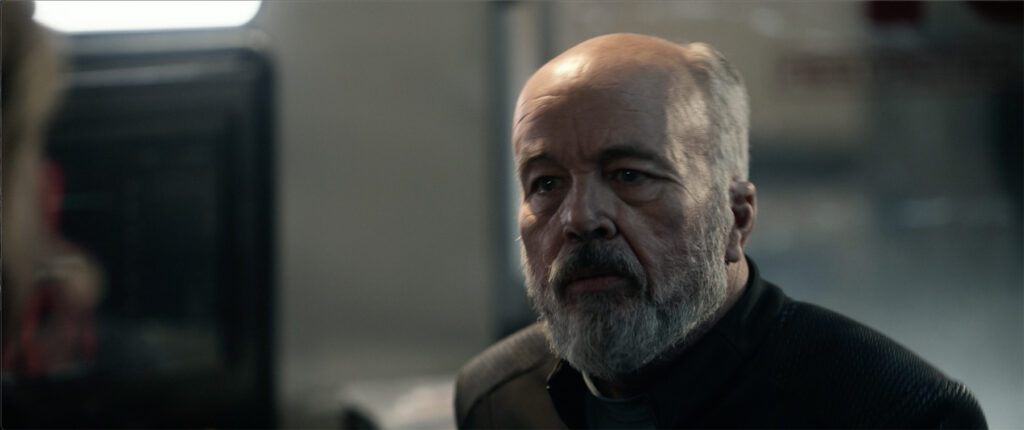
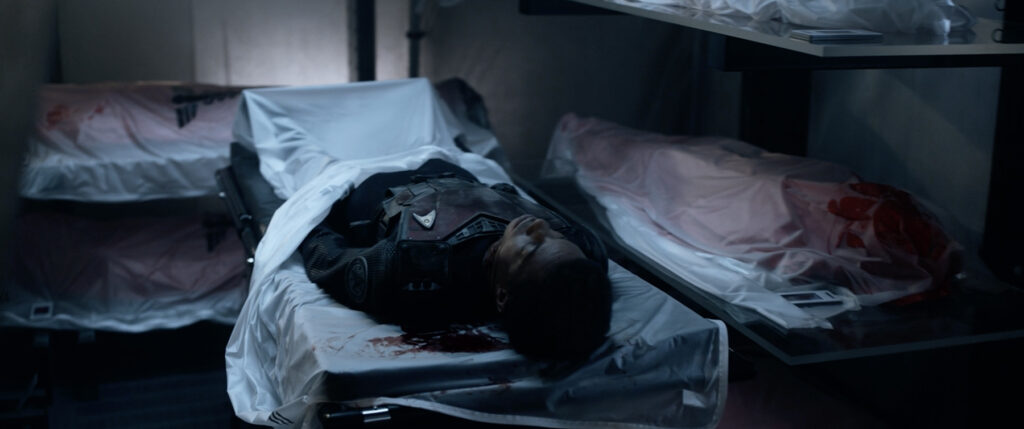
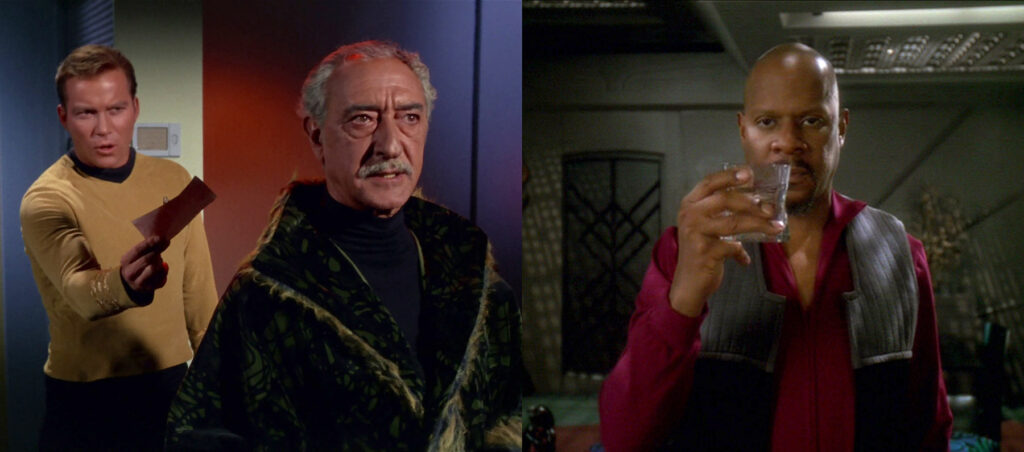
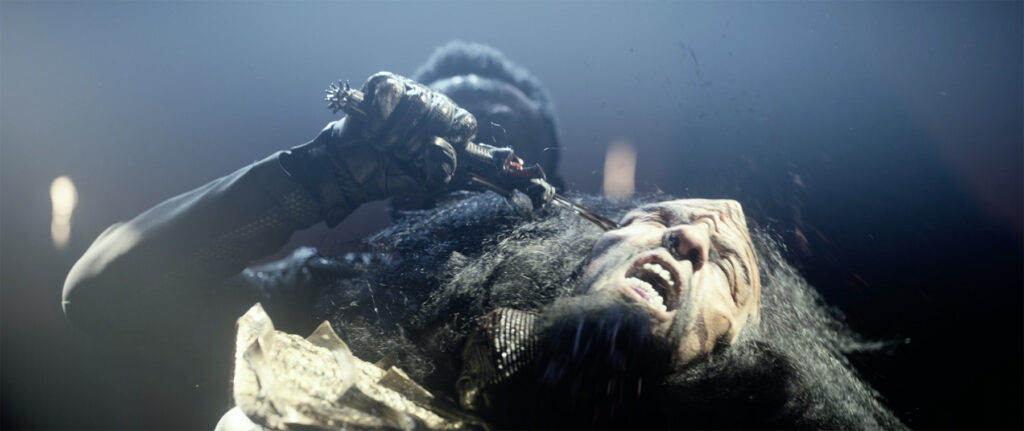
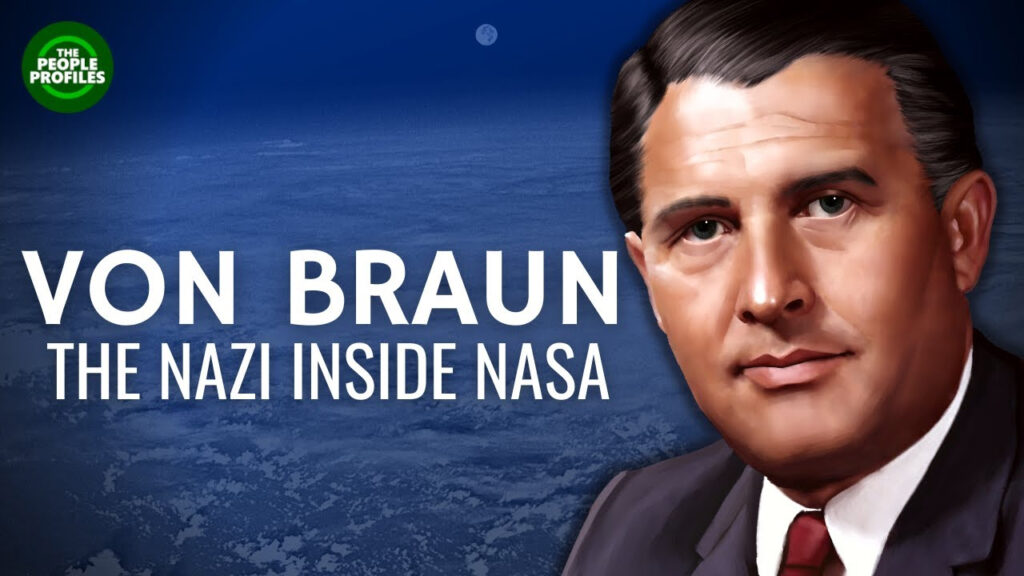
Although, this episode was a more Star Trek like the past, let’s be honest, the Klingons, all of them, are a brutal, warrior race. So, I’m not likely to condemn Dr. M’Benga for his loss of control. Since it seems he was pushed a bit too far, by the whole ordeal. What I did find Interesting, was the Klingon Ambassador Dak’Rah, was portrayed by Robert Ray Wisdom, who was Vaughn, from Burn Notice. I recognized his voice right away. Again playing a jovial bad guy. Very similar roles, trying to be friends, or at least friendly, with someone who despises him. Anyways, I agree Discovery missed the mark, on covering the Klingon war. Maybe SNW will have more flashback episodes to make up for it?
Robert Ray Wisdom has been in nearly everything! 🙂